| Zeitschrift Umělec 2005/1 >> A Tale of Two T-shirts | Übersicht aller Ausgaben | ||||||||||||
|
|||||||||||||
A Tale of Two T-shirtsZeitschrift Umělec 2005/101.01.2005 Lenka Klodová | melancholie | en cs |
|||||||||||||
|
In 2001, at the Roxy club’s Universal Space NoD in Prague presented an exhibition of artistic T-shirts Umělci v triku (Artists in T-shirts) by the Universálové art group. In the exhibition preface they write: “at the end of the last millennium, the T-shirt became a space to convey various frustrations, inclinations, messages and jokes. With its wearer, the T-shirt becomes a stimulus for manifold daily reactions. The space occupying the body may be an ideal platform to laconically express feelings, ideas, provocations, or questions.”
The understanding that we ourselves are advertising spaces remains somewhat tenuous and indistinct. Hardly anybody critically reviews the texts they are wearing on various parts of their bodies. That is, greatly, because the texts occur in foreign languages, and also due to our communist historical experience. The lax attitude to wear ing anything written on our chests, provided it is in English, may stem from the era when English was considered either a spark for Western freedom and revolt, or proof of that Soviet era Tuzex store credibility. Communist reality, it can be argued, through the lack of T-shirt texts stifled one of the activist means of rebellion. Since then, we have no built-in critique and therefore lack respect towards what we wear on our chests. After inspecting my wardrobe I found out that I possess T-shirts with texts such as “Hold my heart,” “Return and follow the magic of love,” “Platoon,” “Power,” and “Silver cat,” all in English. This is indeed material for psychologists. One can purchase a special T-shirt at the Gender Studies center on Gorazdova St. in Prague. It contains the text: “I am having my period” and a picture of a sanitary pad. The T-shirts are available in various colors and two types, short-sleeved and long. The sentence “I am having my period,” placed on ones chest, is a declaration deserving of consideration. I have never fully figured out the title of the exhibition organized by Gender Studies. At the Artfactory gallery in Prague (from February to March 2004). The content of the exhibition was uninteresting. It has, however, become a topic of discussion as the slogan is now being offered to wear with no reference to the exhibition. “I am having my period” is most poignant when worn by a woman, who got pregnant at first ovulation and hasd kept giving birth, child by child, since the end of adolescence. Out of the blue, she gets it! Wearing the T-shirt, she manifests her panic that one ovum is doomed; it missed its life-giving potential. The colorful text, stretched across her ample breasts, might also signify: “I am having my period, and that means I am not pregnant at the moment, I am ready to be fertilized.” In that case, the text would serve as secondary sexual signal announcing ovulation, such as when a female primate’s posterior turns red; over the course of evolution, such signaling has diminished. There is a T-shirt, however, whose message is far more apparent and absolute. Its testimony is very personal; rather than political, it is confessional. It is a white minidress with dark red text: “I had an abortion,” located on the lower abdomen. On the backside, located equally low, there is a large dark red circle. This mini-dress functions as a real activist tool. It is an Art Communication Tool (ACT), developed by the Women on Waves (WOW) organization in collaboration with Willem Veelthoven, an artist, designer and professor at the Universität der Künste in Berlin, as a part of the Abortion legalization campaign. The abortion and menstruation T-shirts both share a similar strategy and goal—to open, through visualization, the subject to public debate. While the menstruation T-shirt could be understood humorously, since males or pregnant women may obtain it at the Gender Studies, center the abortion T-shirt is deadly serious. The “I had and abortion” project intended that all women that had to experience the abortion should wear it, to declare the importance of this mass problem. According to the World Health Organization (WHO), a woman has on average 1.5 abortions during her life. Annually, 55,000,000 abortions take place, of which 20,000,000 are illegal and unsafe. And every year, 80,000 women die a pointless death from complications arising from these illegal abortions. Since these figures are unknown, people think that abortion is an exceptional occurrence. Thus it remains easy to criminalize abortion and to keep it illegal in many countries. For that matter, in countries in which abortion is illegal, just as many abortions take place, on average, as in the rest of the world. The WOW campaign transcends boundaries such as law, medicine, seafaring, art, and literature. The WOW activities were presented as art projects at the Biennale of Venice (2001) and at AvL Ville (2002) in Rotterdam. The installations were also shown at the Thessaloniki Biennial 2003, curated by Rosa Martinez (Spain) and Harald Szeemann (Switzerland), and solo in Mediamatic Supermarkt in Amsterdam the same year. Apart from the “I had an abortion” T-shirts, the installation consists of an internet project Portrait Collector, and Every 6 Minutes, a simple installation that consists of the text, “Every 6 minutes, a woman dies from an illegal abortion” and a red lamp that lights up for every dying woman. After the summer, WOW will bring into use a server that, corrected to the times of day, will send out over the Internet the rhythm of deaths from illegal abortions. Every computer connected to the Internet can receive this pulse and display the rhythm. The authors are Willem Velthoven and Rebecca Gomperts, WOW director. One of the foundation’s best-known projects is the Abortion boat. The mobile clinic, A-Portable, is regarded as a key work by Atelier van Lieshout and was previously presented at the Biennale of Venice (2001). Through cunning use of maritime law, just outside the 12-mile zones of countries where abortion is forbidden, women can obtain information and actual abortions. These actions are legal according to Dutch law and according to international Maritime law, which is recognized by the countries that are visited. The ship sails under the Dutch flag, and abortions are provided by a team of Dutch medical practitioners on Dutch ‘territory’. Women interested can simply board with a passport, sanitary pads, a change of underwear, and Rh factor information. The A-portable exhibition, along with other WOW projects, follows the tendency to explore ways art can influence and participate in solving socially sensitive issues. The abortion T-shirts, however, testify to the difference between activist and artistic approaches. Artistic expression is not only a mere supporting illustration of verbal constructions, but a perfectly independent language. Artistic expression always conveys autonomous information, which does not have to necessarily follow its original idea. Visual reality is able to comprehend even what we do not wish to express verbally. The aggressive artistic condensing of the T-shirts reveals the simplifying approach of activism, the reduction of personal storytelling to its concluding exclamation mark. It reduces the multitude of stories—about strange love, illness, problems, poverty, indolence, selfishness, and murder—to the common essential fact of a blood stain on the backside. WOW installations, fashion photographs, and web pages juxtapose abortion and mechanisms of the clothing industry: “What a nice T-shirt! Where can I get it?” The essence of fashion strategy is to evoke the need for identification with the subject, the need to become “one of them.” The T-shirt suits the model in the picture; does it mean that abortions are in fashion? This can not be the conclusion that WOW is trying to make. The visual form of the campaign shows a certain cynicism and absurd morbidity that results from the simplifying gesture of touching the place where two lives join. The oxymoronic juxtaposition of blood stains on a stunning model—tells a tale that transcends the idealism of WOW. The text on the backside “I am alive” might also be interpreted as “(only) I survived.”
01.01.2005
Empfohlene Artikel
|
|||||||||||||
|
04.02.2020 10:17
Letošní 50. ročník Art Basel přilákal celkem 93 000 návštěvníků a sběratelů z 80 zemí světa. 290 prémiových galerií představilo umělecká díla od počátku 20. století až po současnost. Hlavní sektor přehlídky, tradičně v prvním patře výstavního prostoru, představil 232 předních galerií z celého světa nabízející umění nejvyšší kvality. Veletrh ukázal vzestupný trend prodeje prostřednictvím galerií jak soukromým sbírkám, tak i institucím. Kromě hlavního veletrhu stály za návštěvu i ty přidružené: Volta, Liste a Photo Basel, k tomu doprovodné programy a výstavy v místních institucích, které kvalitou daleko přesahují hranice města tj. Kunsthalle Basel, Kunstmuseum, Tinguely muzeum nebo Fondation Beyeler.
|








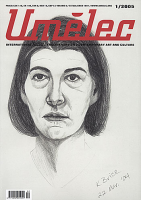






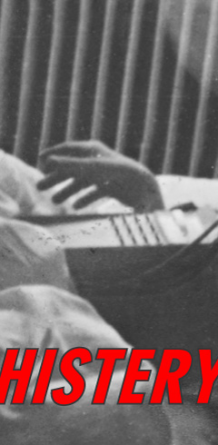











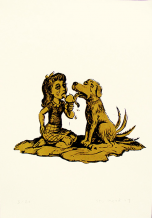
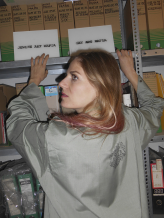
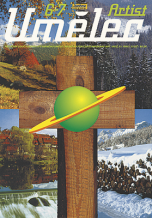
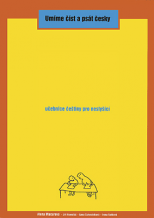


 We Are Rising National Gallery For You! Go to Kyjov by Krásná Lípa no.37.
We Are Rising National Gallery For You! Go to Kyjov by Krásná Lípa no.37.
Kommentar
Der Artikel ist bisher nicht kommentiert wordenNeuen Kommentar einfügen